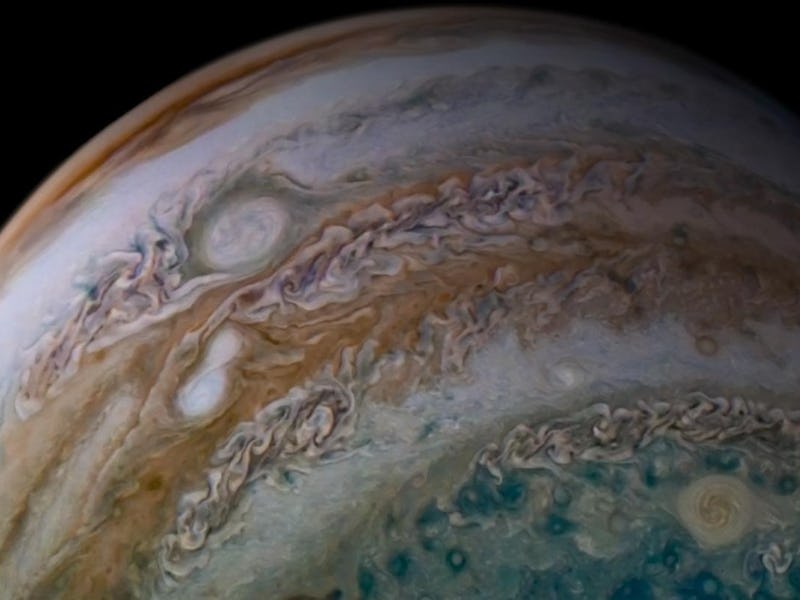What crashed into Jupiter? Everything you need to know about that impact video
The giant planet helps protect us from similar incidents.

Accidents happen, even in space.
An amateur astronomer caught Jupiter in trouble t as a large object smacked into the gas giant, creating a small “poof” in the planet’s atmosphere.
But don’t worry, Jupiter has actually seen worse. The largest planet in the Solar System often attracts this kind of scuffle due to its exceptional gravitational pull, which helps protect the Earth from similar incidents.
On Monday, Brazilian astronomer José Luis Pereira caught a sudden, bright flash on Jupiter.
The brief footage shows an object crashing straight into the planet, leaving a small impact behind.
Planetary scientist Paul Byrne is not quite sure whether the object is an asteroid or a comet.
“We do know that it can't have been too big — images of Jupiter since the impact doesn't reveal an impact scar,” Byrne tells Inverse. “Although the impact flash looked enormous, it's not a 1:1 indicator of how big the impact event itself was.”
According to Byrne, the object could have been a few tens to perhaps a few hundreds of meters in size. So this small object probably exploded in Jupiter’s upper atmosphere since it lacked enough size and speed to really pierce through and leave behind a scar.
Due to its humongous size and its orbit puts it close to the asteroid belt, Jupiter often gets smacked by these objects. The most famous incident took place in 1994 when fragments of the Shoemaker-Levy 9 comet collided with Jupiter.
This composite image shows fragments of the comet as they collided with the gas giant.
The comet had been orbiting Jupiter for nearly a decade before Jupiter’s gravity tore it to shreds, breaking it apart into 20 fragments. The string of fragments had been caught in a two-year orbit around Jupiter before crashing into its cloud tops.
The fragments smashed into Jupiter with the force of 300 million atomic bombs, according to NASA.
The impacts started on July 16, 1994, and ended on July 22, 1994.
“Indeed, we've seen several such impacts at Jupiter over the past several years, suggesting that they're relatively common,” Byrne says. “Even a modest impact on Earth would be devastating, but Jupiter is so big it seems to be able to shake off these kinds of events without any problem.”
Luckily, Earth doesn’t have to suffer through the same type of this cosmic wrath, and that is partly due to its larger planetary sibling.
Scientists believe that Jupiter’s sheer size actually deflects some of these impacts from the rest of the Solar System’s planets by taking them on itself.
As the largest and most massive planet around the Sun, Jupiter's gravity is so strong that it may actually fling some of these flying space objects outside of the Solar System before they get closer to Earth. In fact, some scientists think that’s why life on Earth was able to thrive.
Essentially, Jupiter is the older kid protecting the underdogs from the bullies on the Solar System playground. It just takes its share of hits along the way.
This article was originally published on